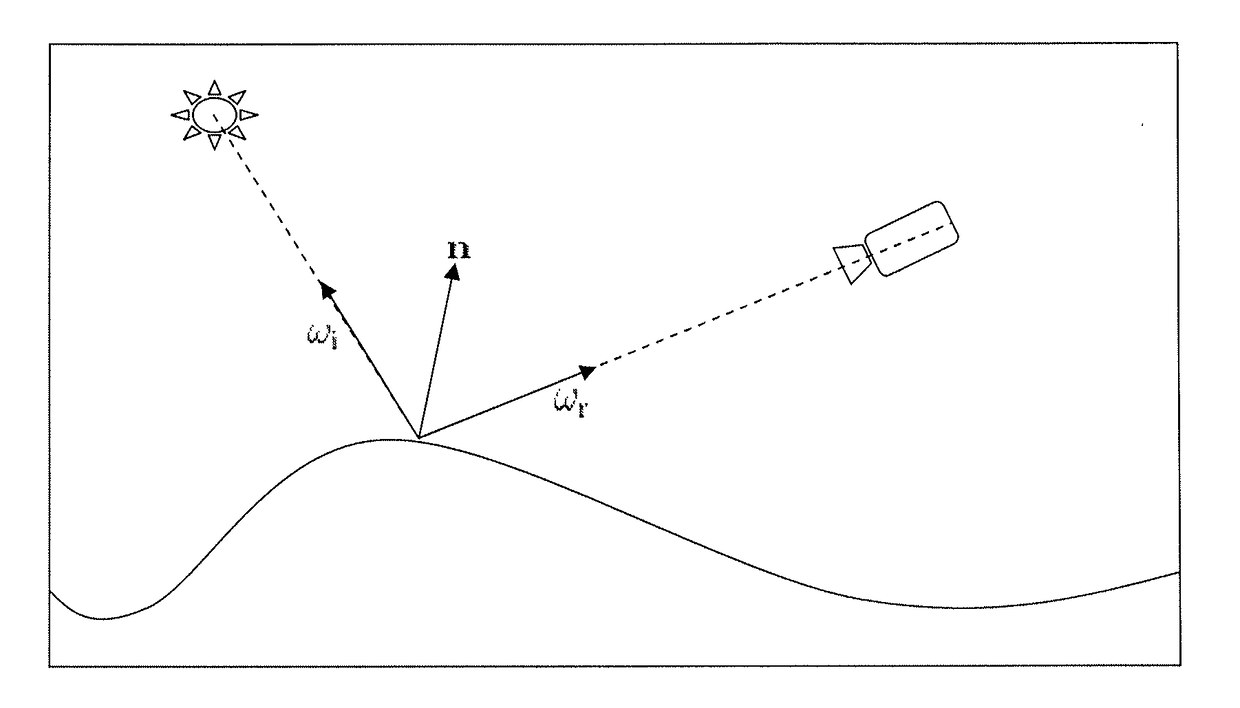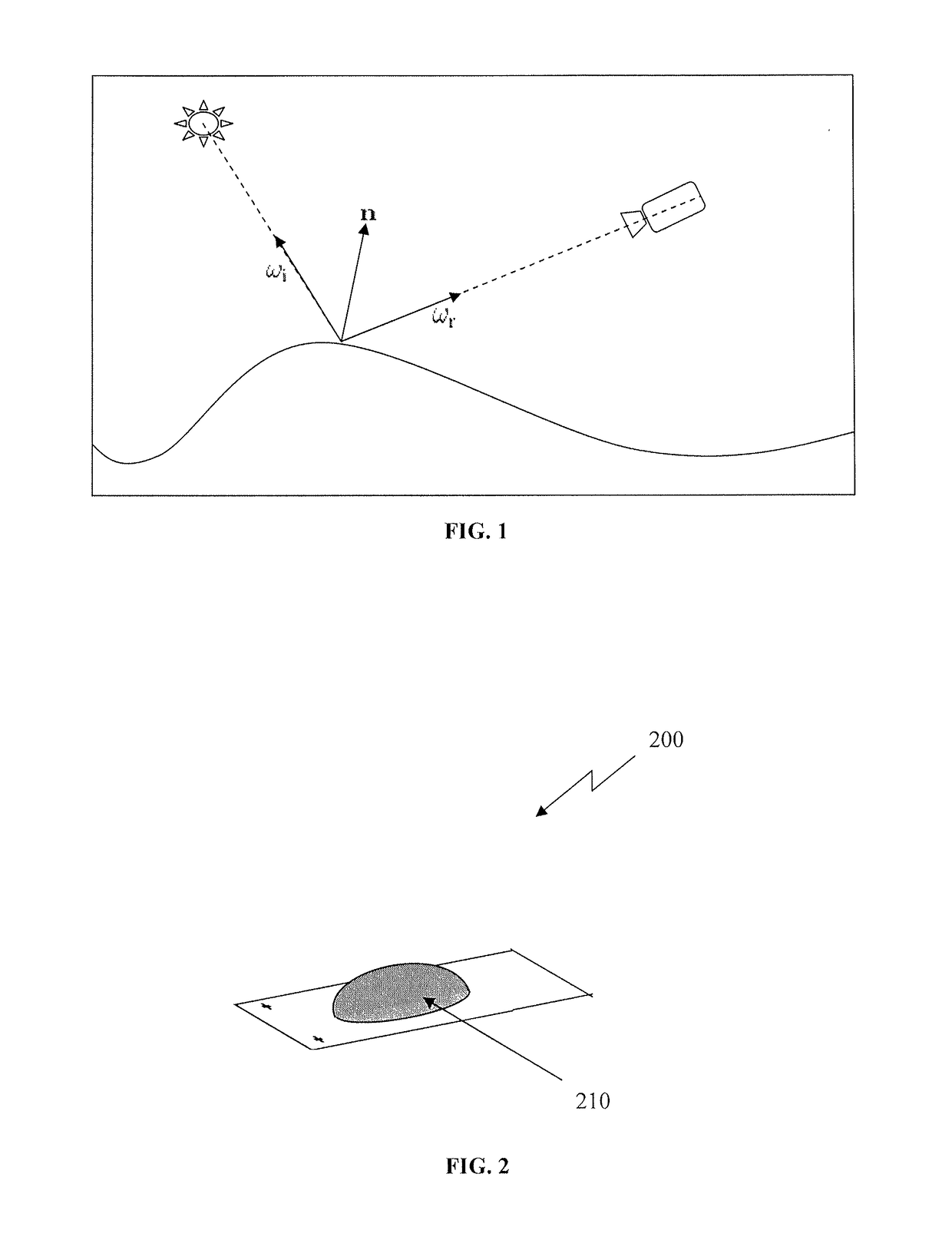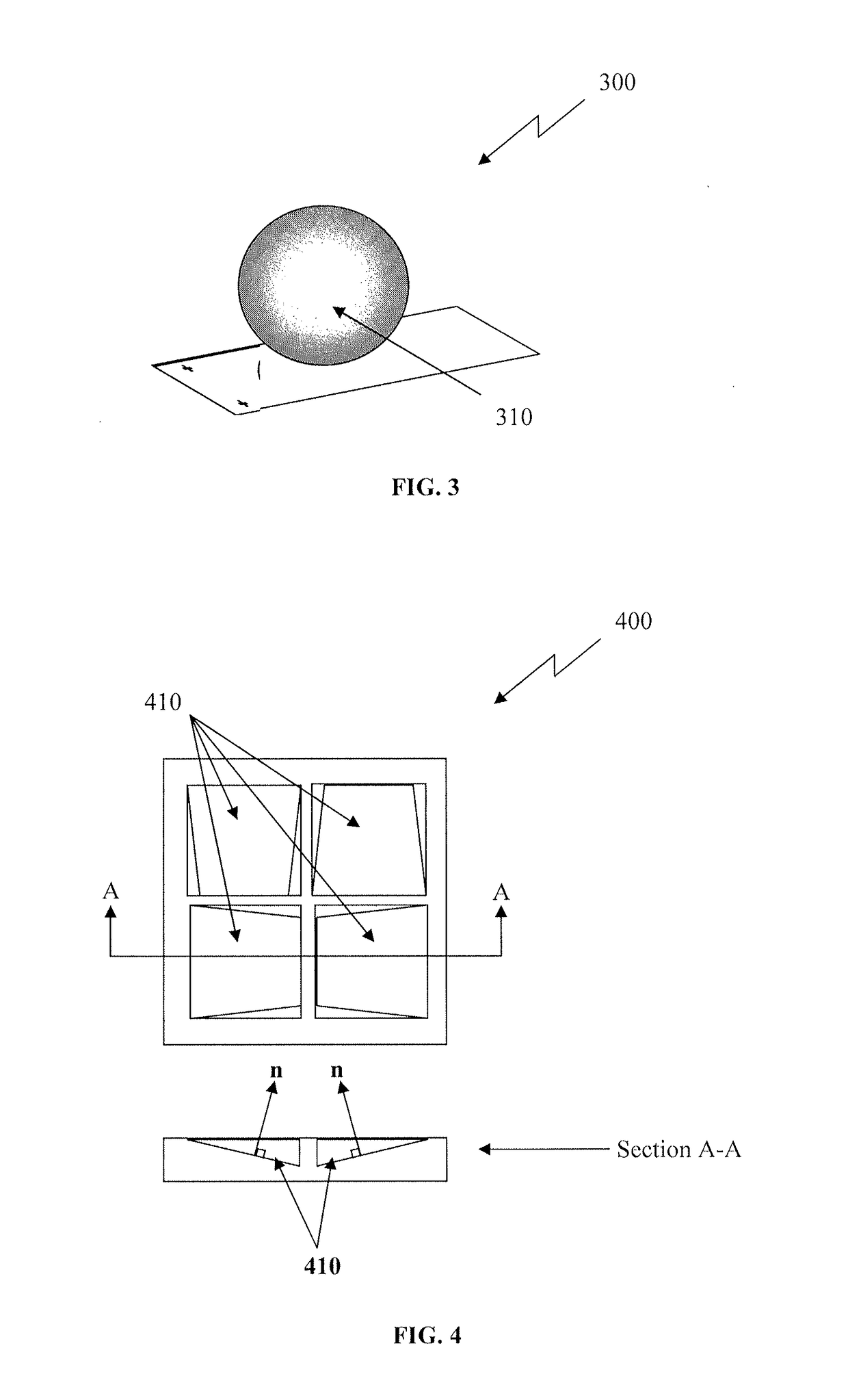Imaging apparatus, systems and methods
a technology of color correction and imaging process, applied in the field of color measurement and color correction/color transformation in an imaging process, can solve the problems of inability to accurately measure the color of the target, inability to take into account, and limited accuracy of such transformations, and achieve the effect of increasing the accuracy of color estimation and transformation
- Summary
- Abstract
- Description
- Claims
- Application Information
AI Technical Summary
Benefits of technology
Problems solved by technology
Method used
Image
Examples
Embodiment Construction
)
[0034]The present disclosure advantageously provides apparatus, systems and methods that facilitate estimating and accounting for (i) illumination conditions, (ii) viewing conditions, and (iii) reflectance characteristics for imaged surfaces when performing color measurement / correction / transformation in an imaging process such as photography. Relevant illumination conditions may include, for example, for each light source, spatial characteristics of the light source (such as an illumination vector relative to a surface normal of an imaged surface), intensity characteristics of the light source and color characteristics of the light source. Relevant viewing conditions may include, for example, for an image sensor, spatial characteristics of the image sensor (such as the viewing vector relative to a surface normal of an imaged surface). Relevant reflectance characteristics for an imaged surface may generally define how the reflectance of a surface (including, e.g., a perceived color ...
PUM
 Login to View More
Login to View More Abstract
Description
Claims
Application Information
 Login to View More
Login to View More - R&D
- Intellectual Property
- Life Sciences
- Materials
- Tech Scout
- Unparalleled Data Quality
- Higher Quality Content
- 60% Fewer Hallucinations
Browse by: Latest US Patents, China's latest patents, Technical Efficacy Thesaurus, Application Domain, Technology Topic, Popular Technical Reports.
© 2025 PatSnap. All rights reserved.Legal|Privacy policy|Modern Slavery Act Transparency Statement|Sitemap|About US| Contact US: help@patsnap.com



